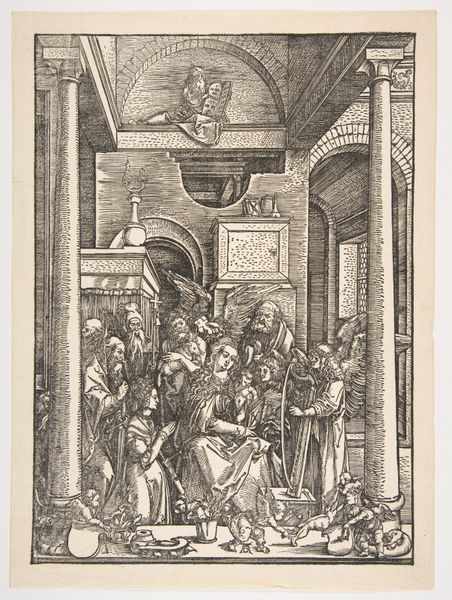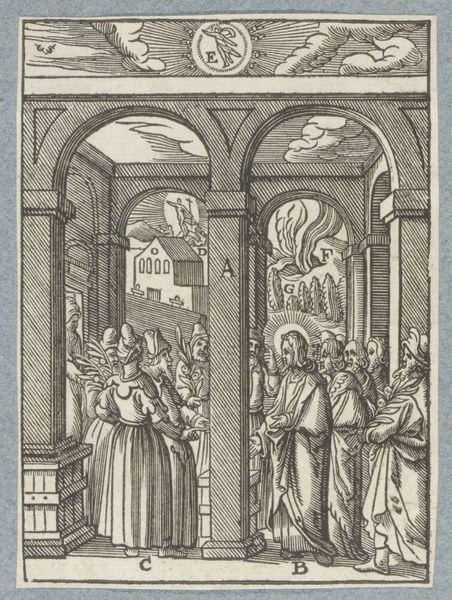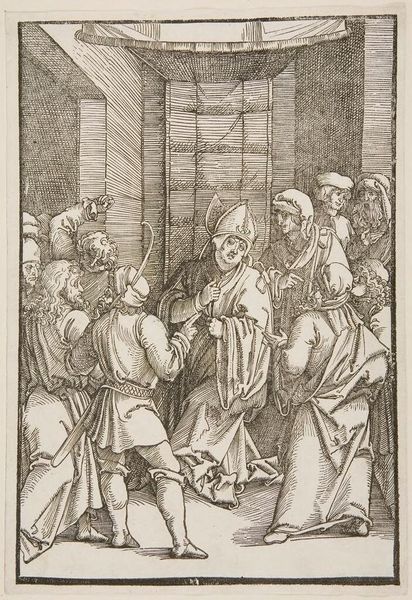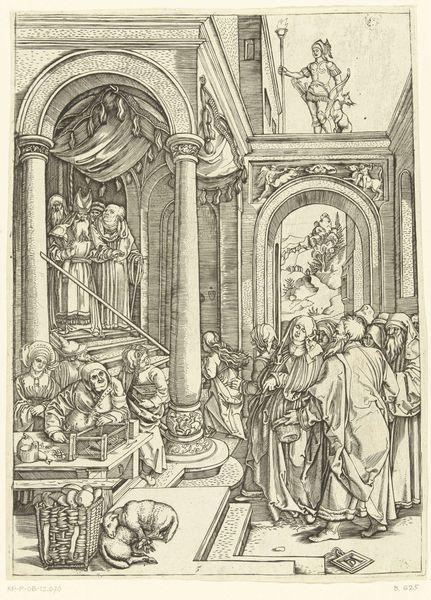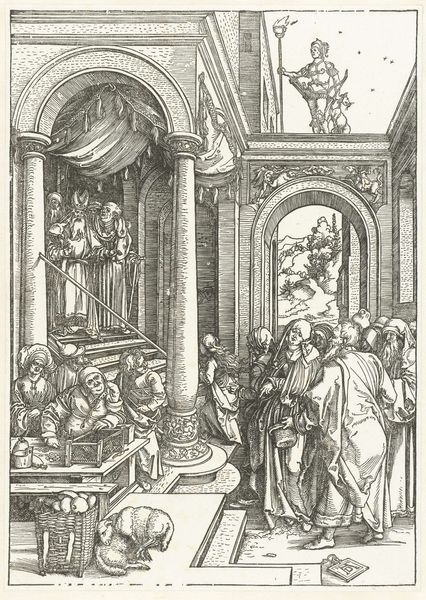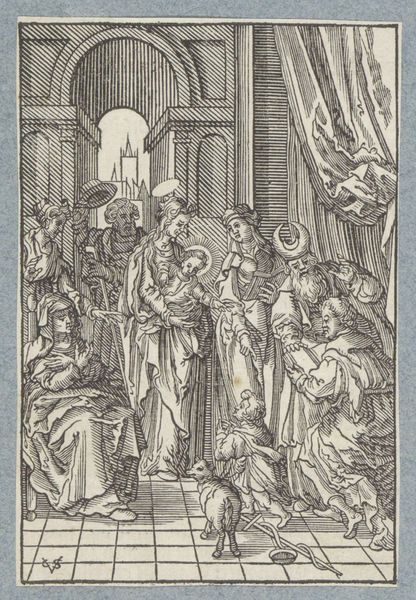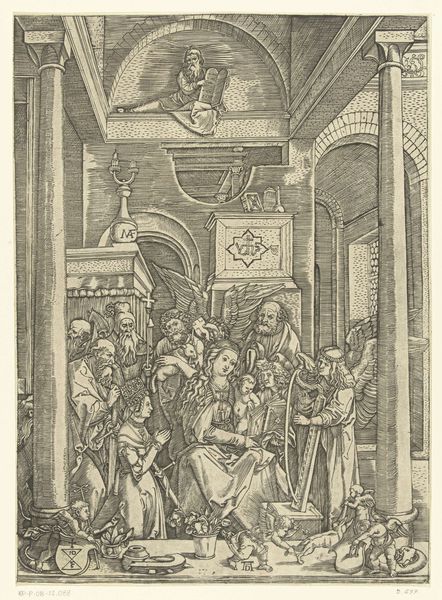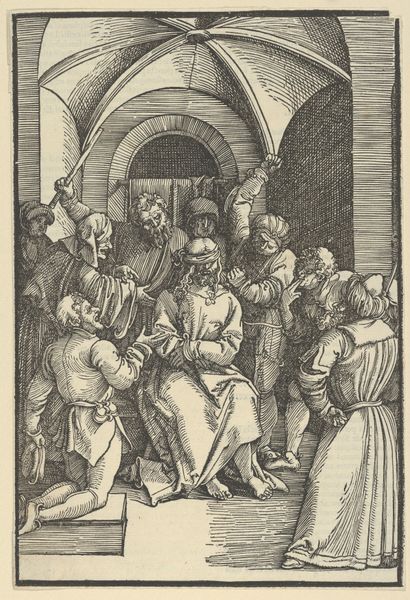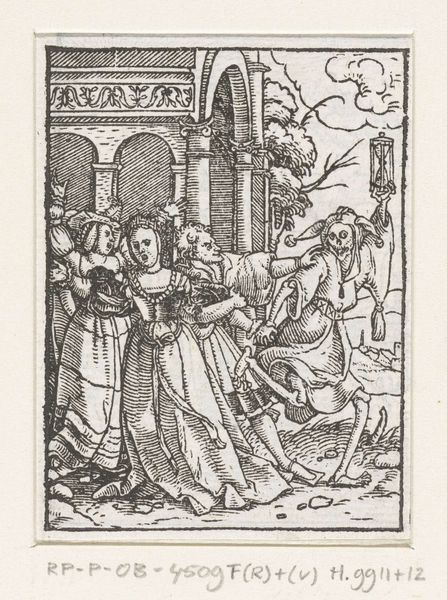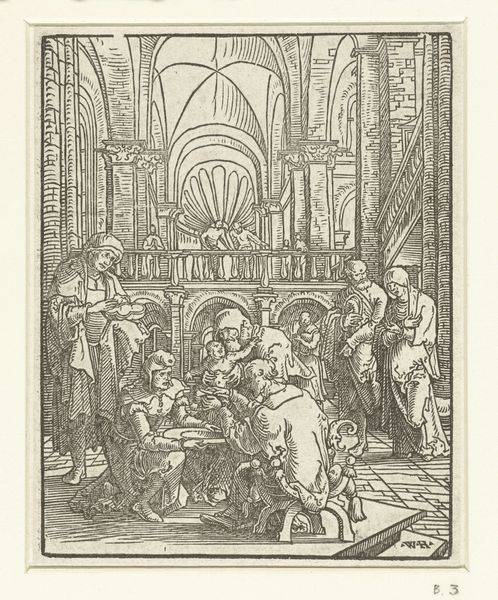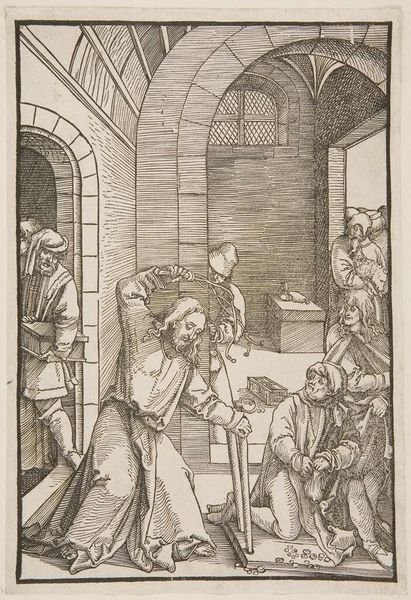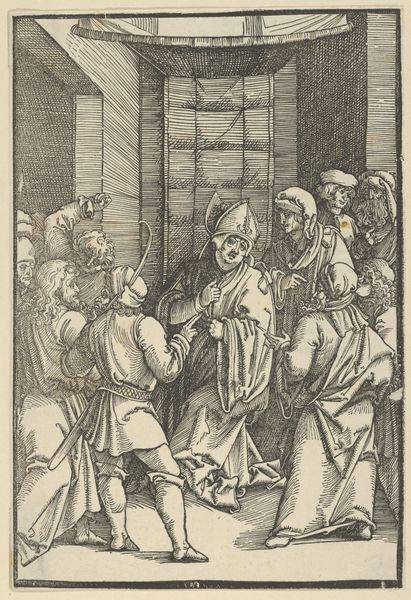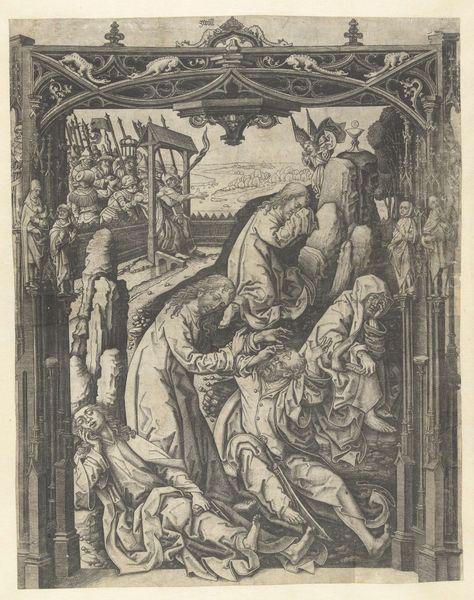
The Holy Family with Two Angels in a Vaulted Hall 1503 - 1504
0:00
0:00
drawing, print, engraving
#
drawing
#
ink drawing
#
pen drawing
# print
#
pen sketch
#
figuration
#
history-painting
#
northern-renaissance
#
engraving
#
angel
Dimensions: sheet: 8 1/2 x 5 15/16 in. (21.5 x 15.1 cm)
Copyright: Public Domain
Editor: So, here we have Albrecht Durer's "The Holy Family with Two Angels in a Vaulted Hall," created around 1503-1504, using engraving. It’s incredibly detailed; the lines are so precise. What do you see in this piece? Curator: I see a powerful negotiation between the sacred and the secular taking place within the very structure of the image. Durer presents us with the Holy Family, yes, but he situates them within an architectural framework reminiscent of Italian Renaissance design. How do you interpret the presence of that vaulted hall? Editor: It feels almost like he’s trying to elevate the Holy Family, placing them within a space of importance, but maybe also suggesting a kind of cultural assimilation? Curator: Precisely! This engraving was made at a time when artists from Northern Europe were increasingly looking to Italy for inspiration. Durer is incorporating those influences, effectively showcasing his artistic skill and his awareness of current trends. Think about the market for prints like this. Who was Durer trying to reach? Editor: Presumably, wealthy patrons interested in both religious art and the new artistic styles coming from Italy? Curator: Exactly. He is providing them with access to Italianate grandeur within a familiar religious context, reinforcing his own status and attracting potential commissions. It’s fascinating how the composition, framing the holy figures under this new architectural order, shifts the artwork beyond simple religious iconography, entering the social and intellectual landscape. Editor: That makes me consider how art, even religious art, plays a part in cultural exchange and displays of wealth. Curator: And how it becomes a tool for artists to negotiate their own position within that exchange. This print shows how social forces and the art market influenced even sacred subjects. Editor: I never thought about it that way. This changed how I see Durer. Curator: Indeed, it illustrates the interwoven relationships between artist, patron, and prevailing cultural values, revealing the power of art as both a religious symbol and a symbol of societal status.
Comments
No comments
Be the first to comment and join the conversation on the ultimate creative platform.
